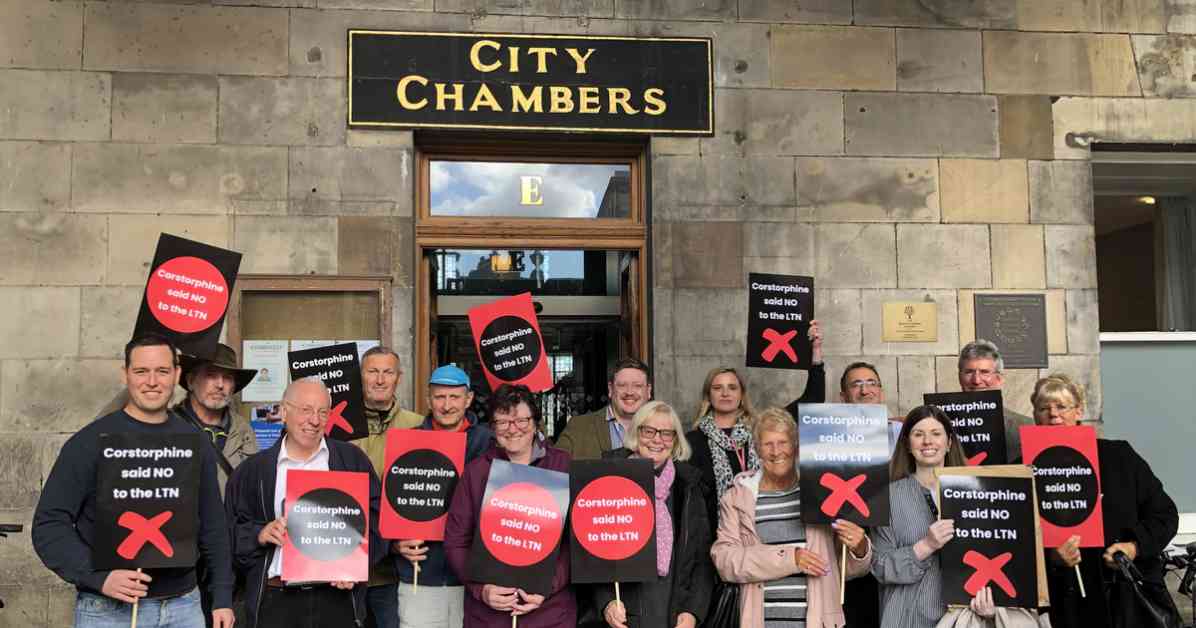Edinburgh Council Under Fire for Alleged Data Manipulation in Low Traffic Scheme Implementation
In a contentious move that has sparked outcry among local residents, Edinburgh Council is facing accusations of manipulating data to paint a rosier picture of public support for a controversial Low Traffic Neighbourhood (LTN) initiative in the Corstorphine area. The scheme, which includes road closures and widened pavements, has divided the community and raised questions about the council’s handling of public feedback.
Survey Results Questioned
The latest survey, conducted by a market research company and involving 311 residents and 330 shops and business users, purportedly showed that “50% of residents support the project, and 24% oppose it.” However, critics have raised concerns about the methodology used in collecting this data, arguing that it failed to capture the full range of opinions within the community. Specifically, groups such as housebound residents and carers were reportedly not included in the survey, leading to accusations of sampling bias.
Campaigners calling for the scheme to be scrapped have pointed to these flaws in the data collection process as evidence of a lack of transparency and accountability on the part of the council. They argue that the true extent of opposition to the LTN may have been underestimated, skewing the results in favor of its proponents.
Impact on the Community
The implementation of the LTN in Corstorphine has had far-reaching consequences for residents, with some reporting feelings of frustration and anger over the changes. The closure of three roads to through traffic, as well as the introduction of footway and crossing improvements, has had mixed results, with some residents citing increased safety concerns and accessibility issues.
One particularly controversial aspect of the scheme is the ‘bus gate’ on St John’s Road, which only allows buses and taxis to enter from Manse Road during peak times. This measure has faced strong opposition from local residents, leading to acts of vandalism against the camera set up to enforce the rules. While traffic monitoring has shown a decrease in traffic around Corstorphine Primary School, critics point to an overall increase in traffic in the neighborhood as evidence of the scheme’s shortcomings.
Calls for Reevaluation
Local resident Peter Roberts, representing the Accessible Corstorphine for Everyone (ACE) group, has been vocal in his criticism of the LTN, describing it as “not working, not wanted, and not democratic.” He has raised concerns about the impact of the scheme on vulnerable members of the community, including elderly and disabled residents who may be disproportionately affected by the changes.
Corstorphine councillor Euan Davidson has echoed these sentiments, questioning the council’s outreach efforts in gathering feedback on the LTN. He has highlighted the exclusion of certain groups, such as the housebound population, from the survey process as a significant oversight that may have skewed the results in favor of the scheme.
Moving Forward
As the council prepares to make a decision on the future of the LTN in Corstorphine, tensions within the community remain high. Proponents of the scheme have emphasized its positive impact on safety and active travel, urging the council to continue and expand the initiative. However, detractors argue that the scheme has failed to deliver on its promises and has instead exacerbated existing problems within the neighborhood.
The upcoming meeting of the council’s traffic regulation orders sub-committee on September 24 will be a crucial moment for residents and stakeholders to voice their concerns and push for a reevaluation of the LTN. The outcome of this decision will have far-reaching implications for the future of transportation planning in Edinburgh and beyond.
In Conclusion
The controversy surrounding the Low Traffic Neighbourhood scheme in Corstorphine highlights the challenges and complexities of implementing sustainable transportation initiatives in urban areas. As the council grapples with accusations of data manipulation and community division, it is clear that a more inclusive and transparent approach is needed to address the concerns of all residents.
By listening to the voices of those most affected by the LTN and considering alternative solutions that prioritize safety, accessibility, and community engagement, the council can work towards a more equitable and effective transportation strategy for the future. Only by fostering open dialogue and collaboration with residents can meaningful progress be made in creating a sustainable and livable city for all.













